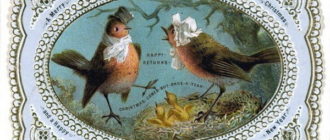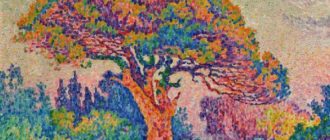
The painting “Dido Founder of Carthage” by William Turner was created by the artist based on the “Aeneid” – the famous work of the Roman poet Virgil. Majestic nature, monumental architecture – all this is contrasted in the image with human fuss.
Among the figures on the left bank, one can only guess the main character. On the right, on the other side of the stream, is the tomb of Sycheus, husband of Dido. The Lebanese pine tends to have a dense crown on a rocky, overgrown cliff. Above, at an unattainable height, one can see the columns of the temple.
Painting “Dido Founder of Carthage” by William Turner is the artist’s favorite brainchild, which he wanted to take with him to the grave
There is a lot of sky and water in the work of the British painter. In this way it is close to his seascapes. The sun in a yellow veil, with strange dark rays is not a fiction. The author observed such a phenomenon after the eruption of the Tambora volcano in Indonesia.
Author: Joseph Mallord William Turner (1775-1851).
Year of writing: 1815.
Size: 155.5 x 230 cm.
Style: Romanticism.
Genre: Landscape. Historical.
Technique: Oil painting.
Material: Canvas.
Location: National Gallery, London, UK.
Joseph Mallord William Turner is an illustrious English painter of the late 18th and early 19th centuries.
He was a master of the battle genre, marine painter, landscape painter. His works were distinguished by special attention to the depiction of the elements, nature, sunlight, against which dramatic scenes of people’s lives are played out.
The famous painter in his work several times turned to classical subjects.
Contemporaries did not always understand his art. They expected a more strict, canonical image, condemning attempts to give naturalness, emotionality to what he painted. Despite disagreements with critics, the master remains one of the most significant people in the history of English painting.
The painting “Dido, Founder of Carthage” by William Turner was the author’s favorite brainchild. He refused to sell it and at first even asked to be buried wrapped in this canvas. Later, he was persuaded to change his will in favor of the National Gallery, where the masterpiece is kept to this day.






